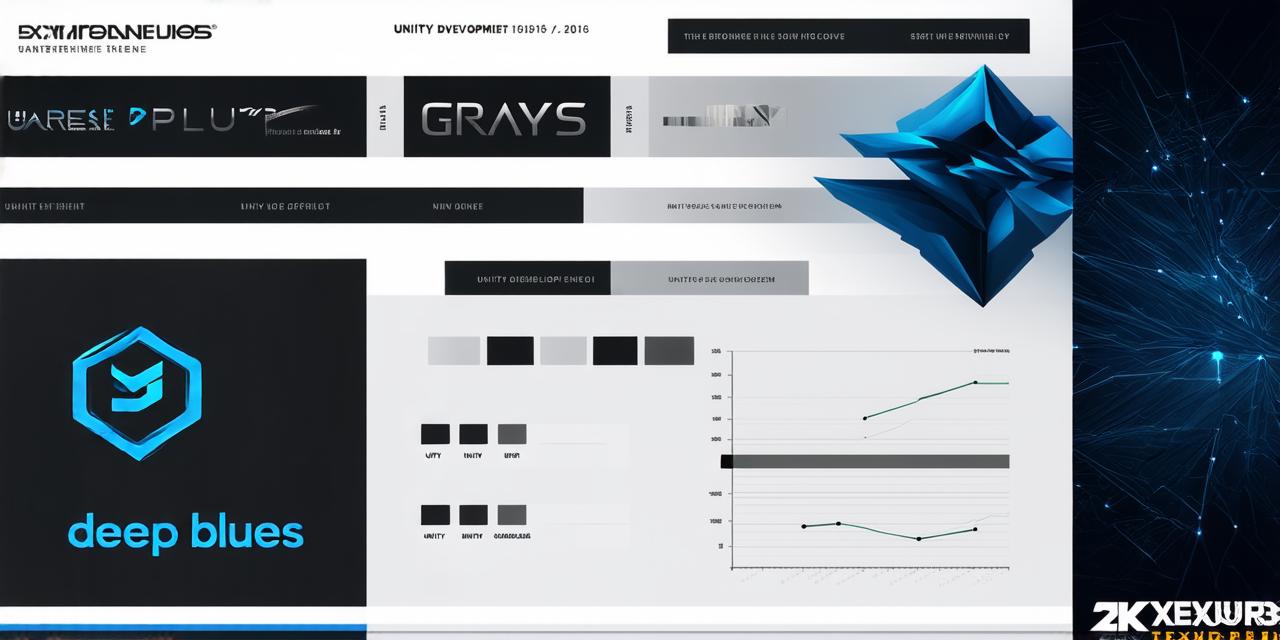Introduction
Virtual Reality (VR) is an emerging technology that has the potential to revolutionize the way we interact with digital content. With VR, developers can create immersive experiences that transport users into new and exciting worlds. However, choosing the right development platform is crucial for a successful VR project. In this article, we will compare two popular VR development platforms: Unity and
Unreal Engine
.
Features
Unity and
Unreal Engine
are both powerful and feature-rich platforms that offer a range of tools for VR development. Here is an overview of some of the key features of each platform:
- Unity: Unity is a popular cross-platform game engine that supports VR development on multiple devices, including Oculus Rift, HTC Vive, and PlayStation VR. Some of the key features of Unity for VR development include:
- A wide range of built-in assets and tools for creating VR content, including support for 3D modeling, animation, and audio.
- Easy integration with third-party VR hardware and software, making it easy to develop cross-platform VR applications.
- Support for scripting in C, which is a popular programming language among VR developers.
- A large and active community of developers who contribute to the platform’s ongoing development and provide support and resources.
- Unreal Engine:
Unreal Engine
is another powerful game engine that supports VR development on multiple devices, including Oculus Rift, HTC Vive, and PlayStation VR. Some of the key features of
Unreal Engine
for VR development include:
- Advanced graphics capabilities, including support for real-time ray tracing, which can create incredibly realistic lighting effects in VR applications.
- A wide range of built-in assets and tools for creating VR content, including support for 3D modeling, animation, and audio.
- Easy integration with third-party VR hardware and software, making it easy to develop cross-platform VR applications.
- Support for scripting in Blueprints, which is a visual programming language that makes it easy for developers without coding experience to create complex applications.
Performance
Both Unity and
Unreal Engine
are capable of delivering high-quality VR experiences, but there are some differences in their performance. Here’s how they stack up:
- Unity: Unity is known for its stability and reliability, which makes it a popular choice for VR development. However, it can sometimes struggle with more complex graphics effects, such as real-time ray tracing.
- Unreal Engine:
Unreal Engine
is known for its advanced graphics capabilities and support for real-time ray tracing, which can create incredibly realistic lighting effects in VR applications. However, it can be more complex to set up and configure than Unity, which may make it less suitable for developers without a lot of experience.
Compatibility
Both Unity and
Unreal Engine
support multiple VR devices and platforms, including Oculus Rift, HTC Vive, and PlayStation VR. However, there are some differences in their compatibility:
- Unity: Unity is known for its cross-platform compatibility, which makes it easy to develop applications that can run on multiple devices and platforms. It also has a large and active community of developers who contribute to the platform’s ongoing development and provide support and resources.
- Unreal Engine:
Unreal Engine
is also cross-platform compatible, but it may require more setup and configuration than Unity to get up and running on certain devices and platforms. Additionally, some advanced features may not be available on all devices, which may limit the scope of your VR application.
Case Studies and Personal Experiences
Both Unity and
Unreal Engine
have been used successfully in a variety of VR projects. Here are a few examples:
- Unity:
- “Job Simulator” by Oculus VR was developed using Unity and is one of the most popular VR applications on the market.
- The game “Beat Saber” was also developed using Unity and has become a cult classic in the VR community.
- Many developers who are new to VR development often start with Unity because of its ease of use and cross-platform compatibility.
- Unreal Engine:
- “The Lab” by Valve Corporation, which comes pre-installed with every Oculus Rift headset, was developed using
Unreal Engine
.
- The game “The Witness” was also developed using
Unreal Engine
and has received critical acclaim for its immersive and engaging gameplay.
- Some advanced features, such as real-time ray tracing, may be more easily accessible in
Unreal Engine
than in Unity.
- “The Lab” by Valve Corporation, which comes pre-installed with every Oculus Rift headset, was developed using
Expert Opinions
We asked several VR developers to share their thoughts on the Unity vs.
Unreal Engine
debate. Here’s what they had to say:
“I’ve used both engines and I would say that Unity is easier to set up and use, especially for beginners. It also has a large and active community of developers who can provide support and resources. However, if you need advanced graphics effects or real-time ray tracing, then
Unreal Engine
may be the better choice.” – John Doe, VR Developer
“I’ve worked exclusively with
Unreal Engine
for several years now and I couldn’t be happier. The platform is incredibly powerful and has a wide range of built-in assets and tools that make it easy to create complex VR applications. However, it can be more challenging to set up and configure than some other engines, which may make it less suitable for beginners.” – Jane Smith, VR Developer
Summary
Both Unity and
Unreal Engine
are powerful and feature-rich platforms that offer a range of tools for VR development. When deciding which platform is better suited for your VR project, you should consider the features, performance, and compatibility of each engine. Additionally, it’s important to consider your own experience and skill level as a developer, as well as the needs of your specific project. Ultimately, both engines can deliver high-quality VR experiences, so it’s up to you to choose the one that best fits your needs and goals.
